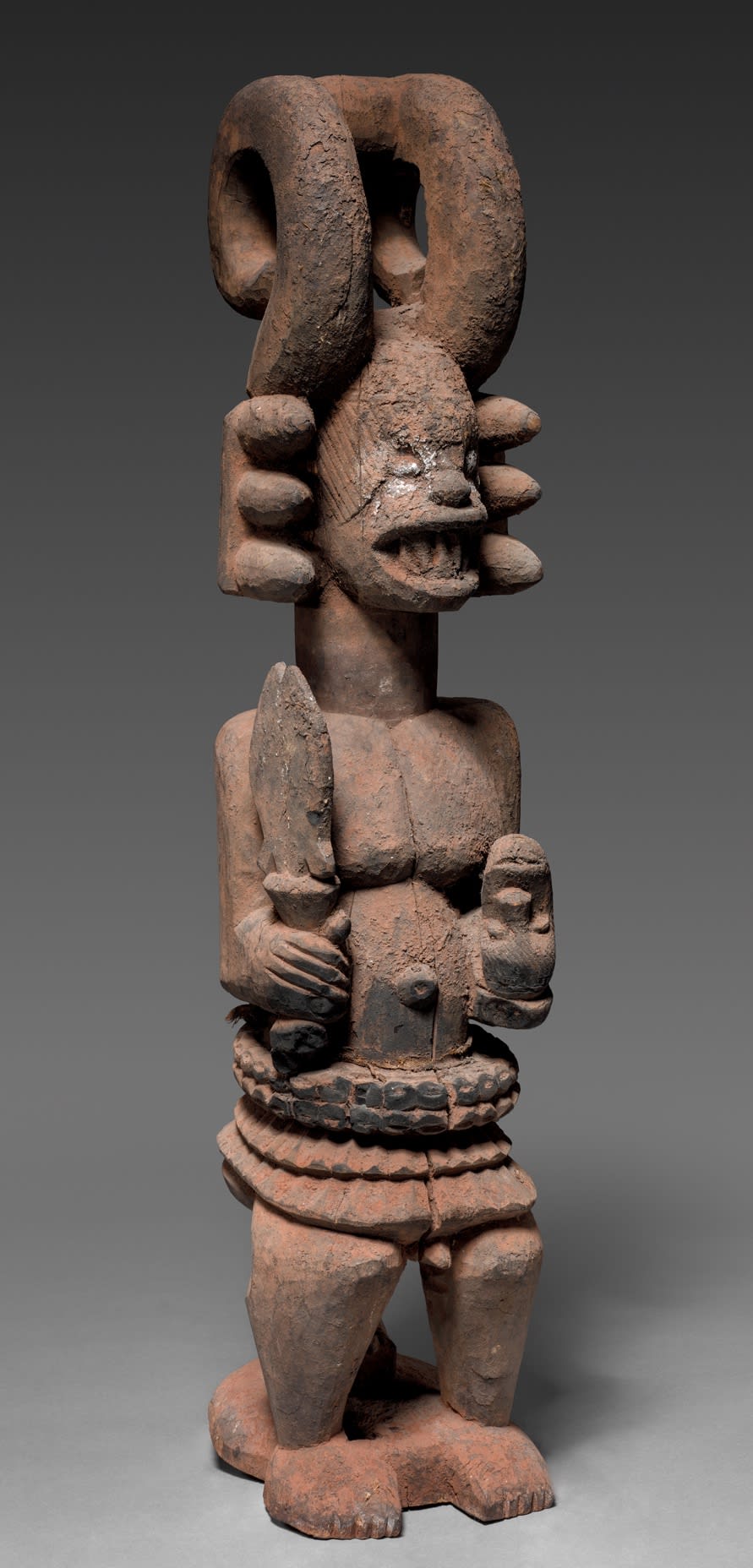
Unlike their European counterparts, many US museums are still actively acquiring new objects to complete their (often relatively young) collections of African art. In many cases such purchases remain unnoticed, although sometimes there’s a press release to inform the public of a new acquisition. Last October, the Cleveland Museum of Art for example purchased an Igbo ikengafigure (info). The museum writes:
The Igbo constitute the largest ethnic group in southeastern Nigeria and their arts are among the country’s most varied and complex. The figure is a key example of an Igbo sculptural genre called ikenga. It depicts a man seated on a one-legged stool, holding a cutlass in one hand and a human skull turned upside down in the other. The ikenga would have been part of a shrine, where it would have received prayers and sacrifices in return for the ancestors’ support and guidance.
The figure wears an elaborate headdress comprised of two curving, interconnected horn-like extensions, with three projecting cone shapes on either side of the face. The horns, perhaps those of a ram, underline the male gender of the image. The figure’s forehead and temples are graced with parallel incisions imitating local scarification patterns known as ichi. The ichi scars signal that the sculpture represents a high-ranking member of one of the many Igbo male associations. The white color around the eyes, derived from chalk, signifies purity and protection, and refers to the benevolence of the spirits.
The ikenga figure is an important addition to the museum’s Nigerian holdings. It also adds a sculptural genre with widespread cultural connections, as it was shared by various different peoples across a vast geographic region.
Note that the fact that the figure is holding a decapitated head doesn’t mean the Igbo were headhunters (a story one often hears in the trade), this was more a symbol than an actual representation of a local custom. It is more reasonable to assume that it symbolizes courage, wit, bravery, material success and other achievement qualities, which raises the status of the owner.
The Cleveland Museum of Art bought the statue from a US dealer who had bought it in Paris in 2010 at the sale of the remainders of the Kerchache collection for only €10,000 (Pierre Bergé & Associates, Paris, “Collection Anne et Jacques Kerchache”, 13 June 2010. Lot 322). A bargain if you consider the quality of the statue and the fact that it was published in both Elsy Leuzinger’s Die Kunst von Schwarz-Afrika (p. 187, #M9) and Jacques Kerchache’s Art of Africa (p. 543, #930). After the sale it also got published in Herbert M. Cole’s Igbo book (Milan, 2013: pl. 9). Igbo art still remains under appreciated, but I’m happy to notice it’s getting the place it deserves in public collections.
UPDATE: Herbert M. Cole was so kind to respond to my statement about the meaning of the severed head; he writes:
The Igbo and several of their SE NIgerian neighbors WERE in fact headhunters, as evidenced in numerous headdresses featuring trophy heads, in ikoro slit gongs, and ikenga. Headhunting may have stopped by virtue of the pax brittanica, but it is well recorded in early accounts of this large area, and while the iconogrphy was sustained for symbolic reasons, it had it origin in warfare (even among Igbo subgroups, which were never unified). I see the upside-down head as an indication of doubled humiliation of enemy peoples whose head brings power to the captor’s community.